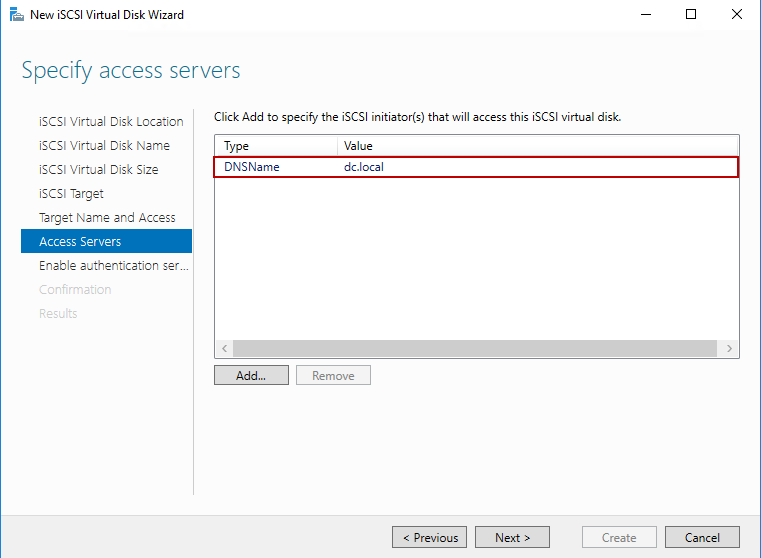
Our website provides a free download of iSCSI Initiator X 1.0 for Mac. This Mac application is a product of KernSafe-Technologies-Limited. The program belongs to System Tools. Our built-in antivirus scanned this Mac download and rated it as 100% safe. Version 3.10 of Xtend SAN provides new features to aid HP users operating in iSCSI Mac environments including:. Leopard Support – Xtend SAN was the first iSCSI initiator to support OS X 10.5, allowing Leopard users to utilize Xtend SAN to connect to the HP StorageWorks EVAs. DAEMON Tools iSCSI Target is used to share image, VHD or optical device with the clients. Mac, Windows or Ubuntu iSCSI Target allows creating a massive iSCSI storage, shared with others. DT iSCSI Target is iSCSI Server and Initiator in one program. There are several iSCSI initiators available for OS X, but we’ll limit this example to using the globalSAN iSCSI initiator which appears to be popular. It’s a simple 3-step process to setup access to the iSCSI target on the ReadyNAS. So, let’s get started. Step 1: Download and install the globalSAN iSCSI Initiator.
To access iSCSI targets, your ESXi host uses iSCSI initiators.
The initiator is a software or hardware installed on your ESXi host. The iSCSI initiator originates communication between your host and an external iSCSI storage system and sends data to the storage system.
In the ESXi environment, iSCSI adapters configured on your host play the role of initiators. ESXi supports several types of iSCSI adapters.
For information on configuring and using iSCSI adapters, see Configuring iSCSI Adapters and Storage.


Software iSCSI Adapter
A software iSCSI adapter is a VMware code built into the VMkernel. Using the software iSCSI adapter, your host can connect to the iSCSI storage device through standard network adapters. The software iSCSI adapter handles iSCSI processing while communicating with the network adapter. With the software iSCSI adapter, you can use iSCSI technology without purchasing specialized hardware.
Hardware iSCSI Adapter
A hardware iSCSI adapter is a third-party adapter that offloads iSCSI and network processing from your host. Hardware iSCSI adapters are divided into categories.
Free Iscsi Initiator For Macos
- Dependent Hardware iSCSI Adapter
- Depends on VMware networking, and iSCSI configuration and management interfaces provided by VMware.
- This type of adapter can be a card that presents a standard network adapter and iSCSI offload functionality for the same port. The iSCSI offload functionality depends on the host's network configuration to obtain the IP, MAC, and other parameters used for iSCSI sessions. An example of a dependent adapter is the iSCSI licensed Broadcom 5709 NIC.
- Independent Hardware iSCSI Adapter
- Implements its own networking and iSCSI configuration and management interfaces.
- Typically, an independent hardware iSCSI adapter is a card that either presents only iSCSI offload functionality or iSCSI offload functionality and standard NIC functionality. The iSCSI offload functionality has independent configuration management that assigns the IP, MAC, and other parameters used for the iSCSI sessions. An example of an independent adapter is the QLogic QLA4052 adapter.
Hardware iSCSI adapters might need to be licensed. Otherwise, they might not appear in the client or vSphere CLI. Contact your vendor for licensing information.
Free Iscsi Initiator For Mac Installer
There was only one choice we could find for a Mac iSCSI initiator. It is available from ATTO Technology. We used the iSCSI target we set up in this article, which is a GNU/Linux box running a 2.6 Linux kernel. Of course, iSCSI is a standard, so any iSCSI target should work as well. The install of the client is pretty easy. *Warning* The install appeared to delete some of our user profile settings like our mail and bookmarks, customized toolbar, stuff like that, so back up your home directory before you install it. Perhaps this was due to something else we did, but this happend the first reboot after the install. Enter the adminsitrator password when asked:
Free Iscsi Initiator For Mac
Click next a couple times to finish up the installation:
Start up the Xtend SAN application and enter the IP address of the target. There are no chap settings like there are with some other initiators, so you can’t set a password on the iSCSI target. Crosshair overlay for mac. Click discover, and the target should show up:
Click add and target status will show. If you want the drive to persist between reboots, choose auto login:


Mac OS X will now detect the drive and ask if you want to initialize it:
Here is the volume after we partitioned it:
The drive shows up like any other drive:
To make a backup of the system:
We don’t have the luxury of gigabit in our lab, so we used 100 Mbit. These settings worked much better than default over the slower connection:
Note that although we enabled CRC32C on HeaderDigest and DataDigest on the target, the initiator didn’t seem to enable it. Also, a note about stability. Before we tweaked the default settings the Mac OS X system would lock up hard. Granted, we are using a nonstandard, almost silly means of connection; however, do beware of the implications of having a device that the O/S expects to be hardware but isn’t. It is the beauty and downfall of iSCSI. This is a relatively new technology. The fact that the only real option for a Mac OS X initiator is the ATTO one shows how immature this technology is. Also, the target software is quite new as well, so it may be that the blame for the lockups with default settings can be shared by the target software.